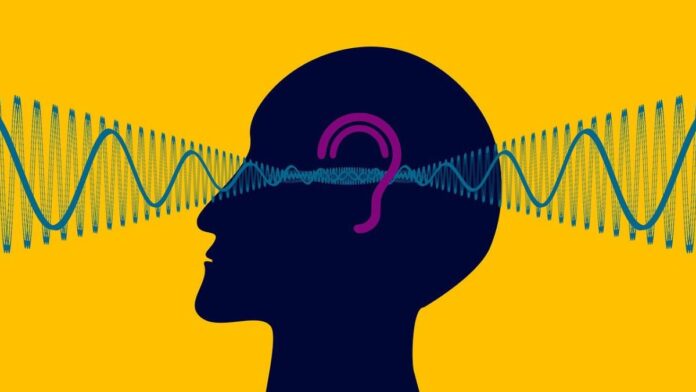In a recent article, we highlighted a new therapy for people suffering from postural tachycardia syndrome (POTS). Oklahoma medics suggest using a pocket sized portable neuromodulation device to alleviate the troublesome symptoms associated with POTS.
Essentially, POTS patients have trouble regulating heart rate (it increases when standing up), blood pressure, breathing, and they have elevated adrenaline* levels. Transcutaneous electrical stimulation of the vagus nerve using a TENS machine can stimulate the vagus nerve from the tragus† to influence those body functions.
The device delivers targeted micropulses of electrical current to modulate the nervous system. The vagus nerve runs from the brain, through the heart and lungs, to the intestines and oversees heart rate, constriction of blood vessels, digestion, breathing, and immune functioning. Stimulating this nerve can help to reduce symptoms of dizziness, fainting, and fatigue.
We had the opportunity to speak to Dr. Stavros Stavrakis, a clinician scientist investigating new treatments for POTS.
Stavros Stavrakis, M.D., Ph.D. is a clinical cardiac electrophysiologist and Associate Professor of Medicine at the University of Oklahoma Health Sciences Center.
His main area of focus is in cardiology: atrial fibrillation, arrhythmias, and POTS.

Medical News Bulletin: How did the idea for the device come about, and is it the first of its kind?
Dr. Stavrakis: The idea of using tragus stimulation is ours, but the device has already been out there. We used a commercially available device [the ParasymTM TENS machine]. It’s not available in the US yet, it’s only available in Europe for now. We previously noticed a lot of beneficial effects of the device on the heart: suppression of inflammation, decrease in arrhythmias, and on heart structure and function. Putting everything together, POTS is a syndrome, meaning it has a lot of manifestations. We hypothesized that using this device would decrease the rise in heart rate that happens with standing. It’s an anti-adrenergic intervention‡, and an increase in adrenaline is what drives it. We first tested it in animals and showed that it was possible to decrease the rise in heart rate and decrease inflammation as well. Then we proceeded to test it in human trials.
Medical News Bulletin: What do your study results suggest about the underlying causes of POTS?
Dr. Stavrakis: It supports the idea that POTS is multifactorial, and an increase in adrenaline plays a central role. There is still more to know about the pathophysiology. Finding that antibodies decreased post device stimulation was a very important component. Whether this device is therapeutic or not, we don’t know yet. We are now phenotyping patients for larger subgroups.
Medical News Bulletin: Is there anyone that shouldn’t use this device, for example people with pacemakers?
Dr. Stavrakis: No. The output of the device is very small, and it actually helps people with atrial fibrillation. In fact, we conducted a previous study on this, published in 2020 called “TREAT AF (Transcutaneous Electrical Vagus Nerve Stimulation to Suppress Atrial Fibrillation): A Randomized Clinical Trial.”
Medical News Bulletin: What is the longevity of the device?
Dr. Stavrakis: At least 6 months to a year. There is a sustained effect after stopping the stimulation, based on prior studies. You don’t need to use it everyday. But this needs testing to confirm.
Medical News Bulletin: What are the next steps for you and your team, following the findings of this study?
Dr. Stavrakis: To be able to personalize this therapy, and to be able to select which patient would benefit most from using this device.
Medical News Bulletin: How widespread do you envision the device to be used for the general public?
Dr. Stavrakis: If we are able to find the right patients to prescribe the device, then it will be the main treatment.
Medical News Bulletin: With the rise of artificial intelligence and machine learning, do you foresee these technologies playing a role in predicting which patients might respond best to treatments like noninvasive vagus nerve stimulation? How could it help with future iterations of this device?
Dr. Stavrakis: I envision an earpod that could measure some kind of physiological biomarker and implement treatment when needed. The biomarker would then run under an AI algorithm to give the needed data. I see this happening with a 5-10 year time horizon.
Our sincere thank you to Dr. Stavrakis for his kindness and generosity with his time.
Footnote
* Adrenaline, also known as epinephrine, is a hormone made and sent through the bloodstream by the adrenal glands during times of stress or danger. This is part of the “fight-or-flight” response.
† The tragus is a small, pointed piece of cartilage located on the outer part of the ear. It projects backward, partially covering the opening of the ear canal.
‡ An anti-adrenergic intervention works to block the effect of neurotransmitters (epinephrine (adrenaline), norepinephrine (noradrenaline), or dopamine) and reduce irregular stimulation that leads to an abnormally fast heartbeat, overly forceful heartbeats, and high blood pressure.



